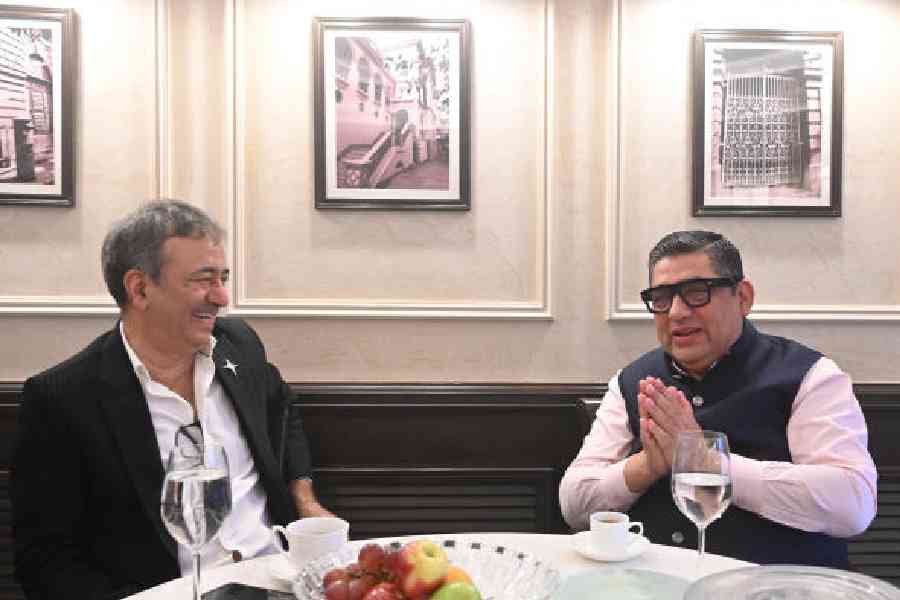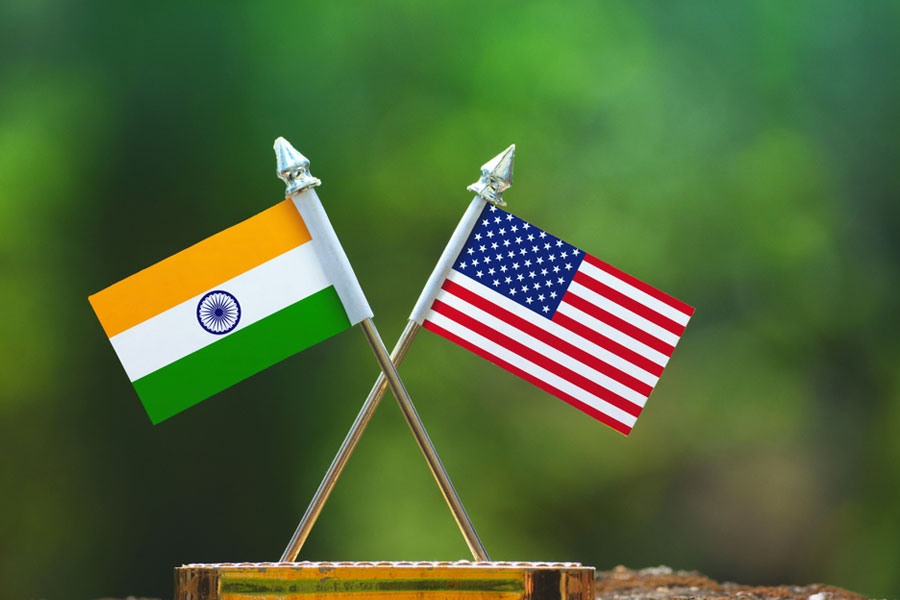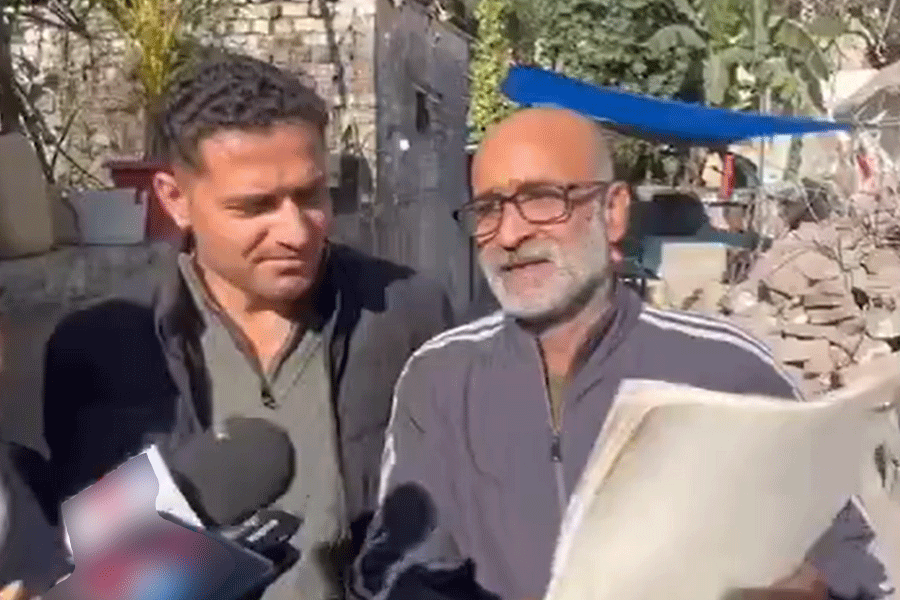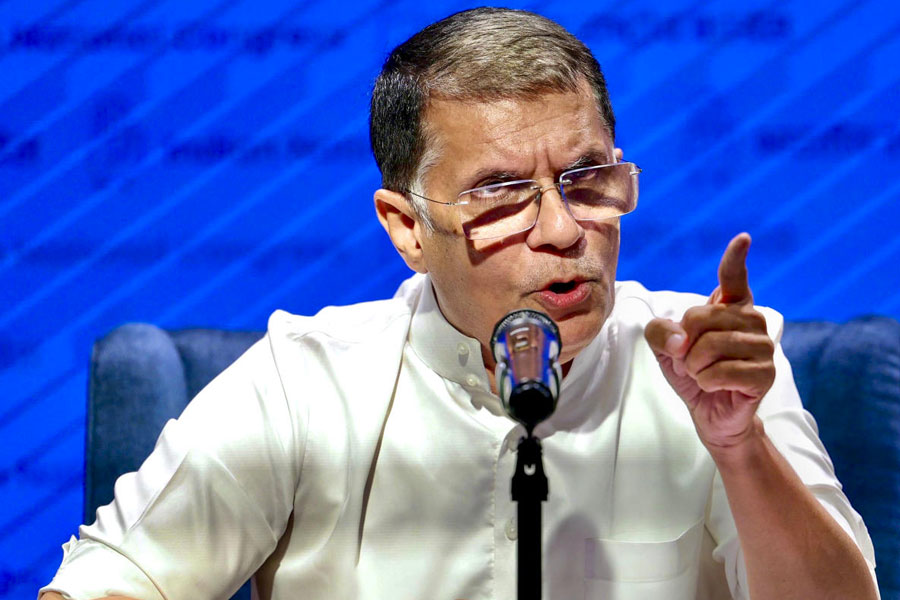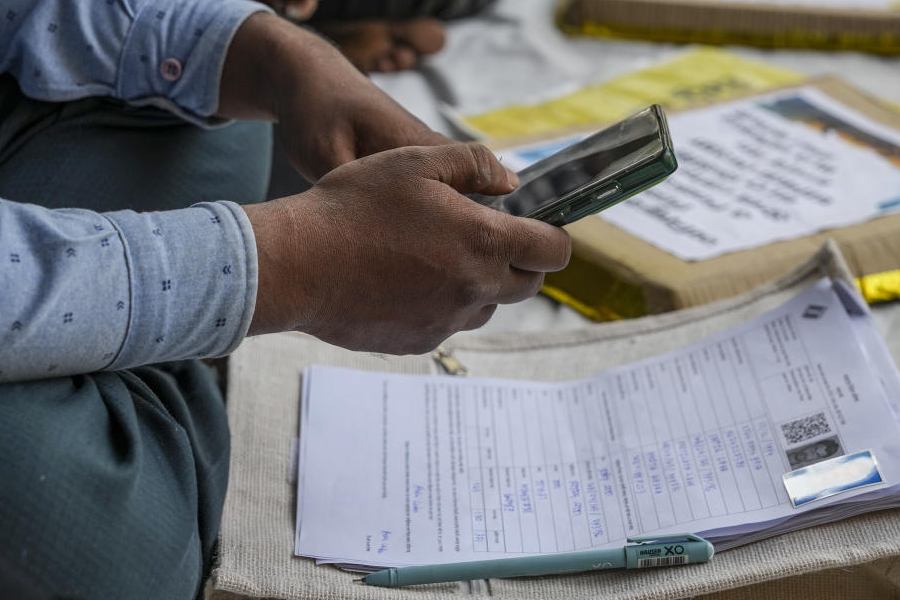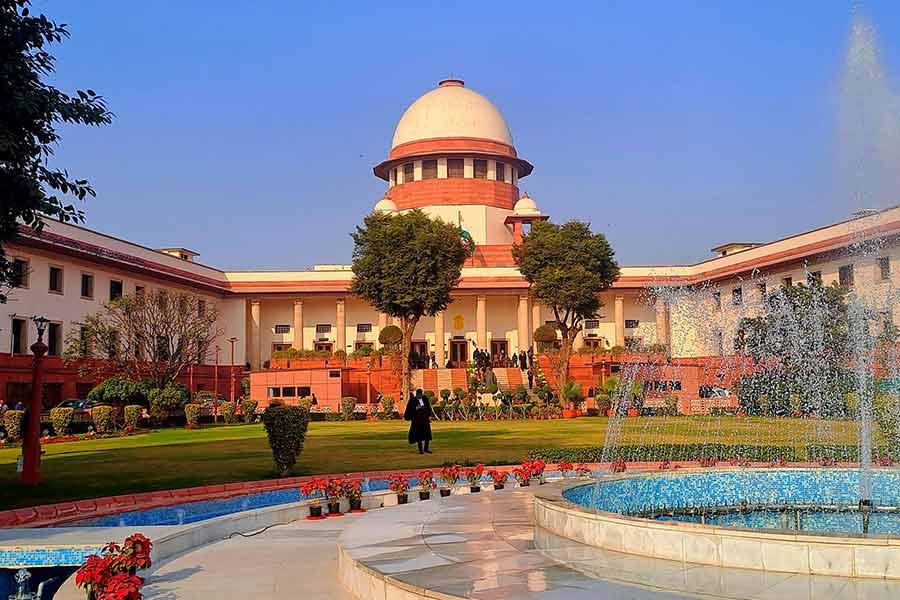Post his extensive session on The Role of Film and Storytelling organised by Merchants’ Chamber of Commerce & Industry, Rajkumar Hirani sat down with restaurateur Anjan Chatterjee for a hearty chat, over cups of black coffee, with t2 for company. What transpired in this informal segment was the camaraderie that the duo shares, their shared love for food and more. Excerpts.
You two have been friends for three decades. But when the professionals in you meet each other or when a filmmaker and a foodpreneur meet, what do they generally talk about?
Hirani: Anjan is a film buff, so he talks about cinema, and I love the food he makes. So I’m very keen on what food he’s bringing whenever he comes to meet. He always carries a truckload of food and sweets. So, we enjoy his food. He praises our cinema. And we both are very happy with each other (both laugh).
Anjan da, tell us about your friendship.
Chatterjee: Raju and I have been friends for almost 30 years. We did a lot of work together. Raju was one of the best and continues to be one of the finest editors India has produced. And, of course, a fine filmmaker. We did a lot of small work together. Raju even modelled for us (referring to his days in advertising). So we had a good relationship. Over a period of time, it kept growing. Being a film buff, I have always admired his films. When his crew wanted to party, my restaurants opened their doors. Do you remember the Munna Bhai party we had at Mainland China?
Hirani: Yes. The whole gang was there. I remember Vidya (Balan) was there. We called the staff at 1.30 in the night, and you opened it for us. Sanju (Sanjay Dutt) climbed the table, which was broken. It was almost the last moment. After that, we had a three-day party. He comes to our office very often and brings a lot of food with him. Also, otherwise we keep ordering from his restaurants every three to four days.
Which means you have favourites.
Hirani: Yeah. Actually, it’s not just one. I love his dim sums, and we often order a very simple fried rice with Schezwan Chicken. Other than dim sums, there’s General Tao’s Chicken. Today I was treated to Luchi and Kosha Mangsho and Gondhoraj Fish. I loved the fish and, in fact, asked for a second helping. It was amazing.
Chatterjee: The other day, we were discussing the power of regional food and we started talking about Pala macchi, which in this part of the country is popularly known as ilish or hilsa.
Hirani: My mom talks about it every time. So, I was quite surprised to know that he knows so many Sindhi dishes that I have never heard of.
Chatterjee: In fact, this discussion led to an interesting collaboration that I will be having with Chef Vicky Ratnani. We are doing a festival where he will do the Sindhi part, while I will cook in Bengali style. It will happen sometime next month.
Both of your crafts have a common thread — storytelling. While cinema is majorly about telling a story through the medium of audio and visuals, food is about telling a story through flavours and spices. What is your approach when writing a new story or making a new dish?
Chatterjee: Yes, both are different mediums, and what is common is passion. The more passionate you are about the subject, the better the result is. Designing a restaurant is like designing a set, and my advertising experience has helped me immensely in teaching about designing, storytelling, and presentation. You also need to be a little crazy. My craziness at work can be dangerous in comparison to Raju, who I have seen is very calm on the set.
Hirani: Food requires a lot of passion, just like cinema. And I have seen the passion in him.
Your films are made with a lot of heart and the characters stay with us. What goes on in your mind when etching a character?
Hirani: There is a connection with food here. Just like when you cook food, you want people to like it. Similarly, when you devise a character, you are like yeh toh dil tak pahuchni chahiye (this should strike a chord with the heart). This should impress the taste buds. So, if the character doesn’t touch the heart, it doesn’t mean anything. So, you think of unique characters all the time; characters which are warm, lovable.
Any plans of making a film here in Calcutta?
Hirani: Though there are no plans at the moment but I would love to. The last time I stayed here for a longer period was during the shooting of Parineeta. The culture is so strong here. My mom is a huge fan of Sarat Chandra’s stories. The locations, the literature, the education, the literacy… the people are poetic, they are so artistic. Whenever I come here, I look at the streets, and I feel that there is so much to shoot here. But I need a very strong and convincing story to be able to come and work here.
We know that you make emotionally resonant films. Do you gravitate towards any kind of food that gives you comfort or nostalgia?
Hirani: Yes, we always do that. Food can make you feel really energetic when you are down and out. I find Asian food healthy and tasty. My other choice, which is indulgent, is sizzlers. Sometimes I go to a sizzler place and eat to my heart’s content.
Moving on, what if you two had to swap your jobs for a day? You had to run a restaurant and a kitchen. And you were to direct a film. What is the first thing that you would do?
Hirani: We both would lose our jobs. We should do what we want. I will enter their kitchen and their restaurant will be closed (both laugh in agreement).
Anjan da, what are your favourite films and characters from Mr Hirani’s works?
Chatterjee: Talking first about the character, I will go with Rancho of 3 Idiots. I identify with him to a large extent. Maine kuch kaam seedha kiya hi nahi. Sab tedha kaam kiya hai. My approaches were always unconventional and had an eccentric streak. Also, I, like most of his films, have loved all his characters and the messages that they gave out. I used to tell him that you bring every character home.
Your films leave an impact on the audience. And our expectations rise every time you make a new film. Do you feel burdened by this responsibility?
Hirani: When I make a film, I make it with a lot of conviction, and I leave the rest to the viewer. If you live in that fear, then you won’t be able to make a film. Everything will be different. Some will be successful, some will be unsuccessful. But you have to make every film with the same intensity and love as your first film. I don’t know what resonates with someone. Everyone has their own taste. Everybody makes a choice. It’s like food. I call it a connection.
While you receive a lot of adulation for some films, you also receive criticism and even hate. How do you handle it?
Hirani: If you are convinced about your product. Then you don’t care. People can get upset about anything. One needs to keep doing what they believe in.

